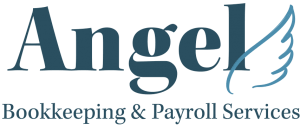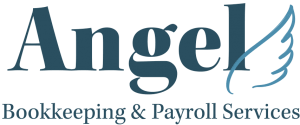Value-added tax (VAT) is a staple of the UK tax system, but it’s also one of the most confusing parts of business bookkeeping. Who’s eligible, and how much do you need to add to your prices? What do you do once you’ve registered? If you’re struggling to get to grips with the rules and regulations, we’ve put together everything you need to know in this guide to VAT thresholds.
What is VAT?
VAT is a tax added to the products and services of eligible businesses. Whether or not you need to register for VAT depends on your taxable turnover. If you reach or exceed the VAT threshold, you’ll add VAT to your prices following the current VAT rates, and the tax will be paid for by your customers rather than by your business.
Current VAT Threshold
In the UK, the current threshold for VAT is £90,000 in turnover over a rolling 12-month period. This includes profit from sales of products and services that are standard or zero rated.
If you’ve reached £90,000 in the last 12 months or you think you will in the next 30 days, you need to register for VAT.
Heading towards £90,000 but not quite there? We recommend keeping a close eye on your taxable turnover from around £70,000 onwards, giving you plenty of time to prepare for VAT registration. For help monitoring your finances, find out more about our bookkeeping services.
Can You Voluntarily Register for VAT?
Yes, you can voluntarily register for VAT if you haven’t reached the £90,000 threshold.
Some businesses choose to do this if they’re selling to other VAT-registered businesses, enabling their customers to reclaim VAT charged. This can create the illusion of a better price, with clients happy that they’ll be able to claim some of the cost back after paying. For B2B businesses, voluntarily registering for VAT also adds credibility, signalling that you’re a profitable and legitimate company.
We also advise businesses to voluntarily register for VAT if they’re approaching £90,000 in taxable turnover. Rather than closely monitoring your finances, you have the peace of mind that your systems are already in place and you won’t be fined for missing deadlines.
Possible Changes to VAT Thresholds
It’s important to note that VAT thresholds can change. £90,000 is the current threshold as of April 2024, but there are rumours that this won’t stay the same for much longer. The Telegraph reports that the November 2025 budget could see the VAT threshold increase to £100,000 in an effort to boost economic growth.
How to Register for VAT
After exceeding the VAT threshold, you’ll need to register for VAT within 30 days of the end of the month in which you reached the threshold. For instance, if you exceed the threshold on 12th March, you’ll need to register by April 30th. Missing this deadline puts you at risk of fines and other penalties, and you’ll owe VAT on sold products and services even if the customer didn’t pay it.
After registering, you’ll be given a VAT registration number and will need to start adding VAT to your prices, all of which our team can help with.
What Happens if You Drop Below the VAT Threshold?
If you’re currently registered for VAT but your taxable turnover drops below the threshold, you can request that HMRC cancel your registration. This is a voluntary deregistration, and you should only request it if you expect to stay below £88,000 for the next 12 months.
It’s important to note, though, that you don’t have to cancel your VAT registration if you drop below the VAT threshold. Just as you can volunteer to register for VAT, you can also continue as a VAT-registered business if your income frequently fluctuates or you don’t want to adjust your pricing and invoicing.
Legal Obligations of VAT-Registered Businesses
If you’ve registered for VAT, you’ll also have to:
- Update your pricing to align with current VAT rates
- Charge VAT on all eligible goods and services you sell
- Provide VAT invoices to customers where required
- Keep accurate records of sales, purchases, and VAT charged/paid
- Submit VAT Returns to HMRC, usually every quarter
- Pay any VAT owed to HMRC on time to avoid penalties
- Display your VAT number on invoices and certain business documents
- Retain VAT records and receipts for at least six years
All of these tasks take time, which many businesses don’t have. If you’re struggling to keep up with VAT obligations or you don’t know where to start, we’re here to help.
Work With Our VAT Professionals
We offer VAT services for businesses across Worthing and the wider West Sussex area. Our team of qualified bookkeepers can talk you through VAT thresholds and help you register, as well as carry out all your VAT tasks once you’re up and running.
We’ll add VAT to your invoices and submit your VAT returns, for instance. We’ll also take the lead if any issues arise, liaising with HMRC on your behalf, and carry out VAT deregistration if you ever need it.
In short? We complete all of your VAT tasks so that you don’t have to worry about a thing.
To learn more about our VAT services or hand over your obligations, get in touch with our bookkeepers.

